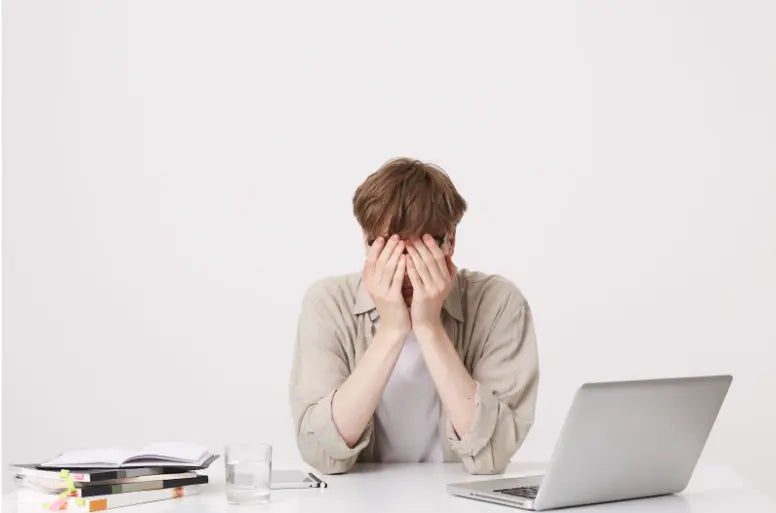
Stress and Our Lifestyle
Every individual has some kind of stress! The type, kind and intensity of that stress varies depending upon the various factors that one lives in. The two main stresses that one can easily recognise are Good stress and bad stress in the simplest terms possible. Stress can be a positive source of energy or force in one's life, it keeps us focused, alert and at the top of our games. Whereas, negative stress is a negative source of energy or force in one’s life, it keeps us withdrawn, sulking, dull, inactive, lost and inattentive and keeps us away from our social circle as well.
It all depends on the kind of stress one is dealing with, how prepared one is to face it – and how they view it. We often think of stress as a harmful, threatening and deadly phenomenon. Yet stress is a normal physiological response to events and thoughts that make one feel sad, depressed and imbalanced. It basically disturbs one's overall equilibrium. When somebody senses harm or danger – physical, mental or emotional – one's defenses kick into higher gear as an automatic process in a rapid format, i.e. the flight or fight response. The response to stress from one’s body is a way of protecting itself. When it works properly,the stress response promotes and acts as a helping source for one to stay focused, energetic and attentive.
In cases of emergency, stress also acts as a savior! It can help one save and help themselves and others as well – giving one extra strength. For instance, in places of accident, people tend to become so very powerful under stress of saving someone's life that they are able to lift cars off of people’s bodies or carry them on themselves to sidewalks or other vehicles all by themselves. The stress response also helps one to rise and meet challenges that they tend to avoid due to their own restrictive inhibitions. Stress has a tendency to keep one attentive during a presentation at work and increases a student’s concentration while writing an exam. These are a few examples when one needs it the most. It is more like a driving agent for one to do things and tasks but, stress stops helping and starts damaging one's health, one's mood, one's productivity, one's relationships and one's quality of life.

Do you know what an Allostatic Load is?
Allostatic Load in simplest words, is defined as the wear and tear of the body. It usually occurs when one is repeatedly exposed to stress; the term was first devised in 1933 by Bruce McEwen and Stellar.
There are mainly 3 types of Allostatic Loads
- Frequent activation of allostatic systems.
- Failure to shut off allostatic activity after stress.
- Inadequate response of allostatic systems leading to alleviated activity of others.
The cumulative burden of chronic stress and events of life involves the interaction of all physiological systems at varying degrees of activities and tasks. With an excess in the environmental challenges, one's ability to cope becomes adaptive to these situations but starts to get blocked in the body as unresolved matters. It is very similar to the conscious mind and unconscious mind phenomenon. Homeostasis is the body’s process which is self-regulating and tends to help maintain stability while adjusting to the conditions it is subjected to, to suit itself for its survival. This only helps one to react and also adapt to changes in the environment.
The best example to understand this is, Imagine a horse or a donkey carrying a heavy load of weight on itself. Now imagine, what could possibly happen if the master starts piling up more of the weight while also reducing or limiting the food and water? What will happen if this becomes a regular exercise with incomplete or less sleep? To add on to it, a routine with no breaks?
This situation is very similar to the ones we often subject ourselves to. One tends to carry a heavy load of stress with a changing environment and stressors. One goes to work, neglects their health, gives up on physical fitness and regimen, ignores or gives less heed to their nutrition, has sleepless nights due to overwork or stress, takes no breaks and the breaks that are there are also busy with in-house chores and other activities. These are the stresses and loads that we are made to believe as “Adult Routines” and prerequisites of responsibilities and what life calls for.

It is extremely important for one to understand that these shoulds’, ought tos’, have tos’ are not to make our lives a trouble ground but to ease them for better. One needs to understand and change their environment, routines and practices. One needs to prioritize their overall wellness. Wellness not only accounts for physical well-being but also mental well-being!
Mental well-being is promoted by physical well-being and mental well-being is promoted by physical well-being!
Eustress, which is the good stress, pushes one to get out of their comfort zone and perform activities that are needed and necessary. It is a good stress that helps one understand, learn and grow. Distress is the bad stress that does the opposite of eustress. It restricts us, stagnates our growth.

The alarming stage comes when one is unable to have control over the distress. The distress starts to come in between your basic daily routines. It disturbs your sleep, your eating habits, your relationship with other people, you have uncontrollable outbursts of anger, unannounced crying sessions, increased irritability, suppressed hunger or increased appetite, binge or stress eating issues, etc. These are the signs when one should consider taking medical advice through a professional or at least a loved one or confidante to share this with.
At times, no medical assistance is required and only some talking or therapies greatly help in managing the stress. If you are or you know somebody suffering from stress, you should definitely seek help. It is best advised to prioritize oneself, it is 2022 and we should not back down and live less.
- Choosing a selection results in a full page refresh.


